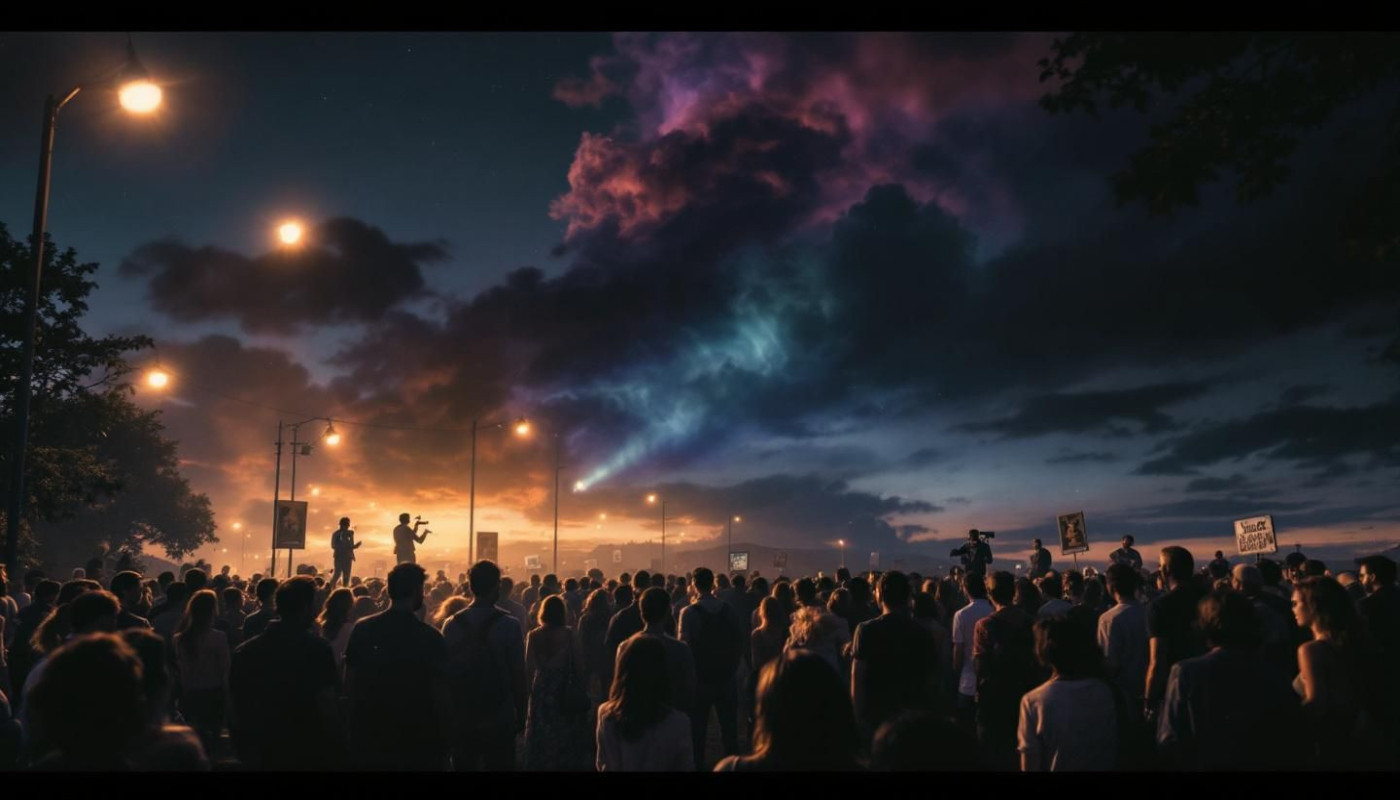Table of contents
Cinema has always been synonymous with storytelling - a medium where narratives unfold, characters develop, and plots resolve in a linear, chronological manner. However, nonlinear storytelling, a term which refers to narratives that deviate from this linear structure, has become increasingly popular in modern cinema. These narratives, which might jump backwards and forwards in time, deviate from conventional storytelling norms to provide viewers with a more immersive, engaging experience. This article will delve into nonlinear storytelling, exploring its potential to break conventions and revolutionize the way stories are told in cinema.
Understanding the Concept of Nonlinear Storytelling
Nonlinear storytelling, a prime narrative technique, is a concept that fundamentally disrupts the traditional norms of storytelling. Unlike linear storytelling, which presents events in a sequential or chronological order, nonlinear storytelling embraces a more scattered approach. This innovative technique allows for scenes to be presented in any sequence, frequently using 'flashbacks' or 'flashforwards' to shift between different time periods. In the realm of cinema, this technique has been adopted by numerous film directors, leaving a lasting impact on audiences worldwide. The origins of nonlinear storytelling can be traced back to various ancient cultures, including the Greeks and Indians, who employed this technique in their folklore and myths. Today, it is frequently seen in modern cinema, with several famous films adopting this narrative technique to add depth to their plots and keep audiences engaged.
Exploring Nonlinear Narrative Techniques
Nonlinear narrative techniques have been utilized by filmmakers to create a unique storytelling approach that transcends the conventions of chronological storytelling. These techniques include flashbacks, flashforwards, and simultaneous narratives.
Flashbacks are a key nonlinear technique, allowing directors to transport their audience back in time, providing crucial background information or offering a deeper understanding of a character's motivations or actions. Flashforwards, the temporal counterpart of flashbacks, propel the audience into the future, creating anticipation or dread. Simultaneously, these techniques can offer a glimpse into potential outcomes or plot twists.
Another innovative technique in the arsenal of nonlinear storytelling is the use of simultaneous narratives. This technique weaves together multiple storylines occurring at the same time but in different spaces. It demands high audience engagement, offering a multifaceted perspective to the narrative structure.
In addition to these techniques, filmmakers also employ 'elliptical editing'. This method involves the omission of certain scenes or events, encouraging the audience to fill in the gaps and piece together the narrative puzzle themselves. This technique can add a layer of complexity and depth to the narrative structure, making the viewing experience more engaging and thought-provoking.
In conclusion, the use of nonlinear techniques such as flashbacks, flashforwards, simultaneous narratives, and elliptical editing can significantly enhance the narrative structure of a film, producing an enriched cinematic experience.
The Impact of Nonlinear Storytelling on Viewers
The phenomena of nonlinear storytelling has a profound effect on viewer engagement, employing a unique blend of narrative complexity to captivate audiences both cognitively and emotionally. The unconventional structure of nonlinear narratives encourages the viewer to become an active participant in the storytelling process, stimulating cognitive engagement through the challenge of piecing together the disjointed plotlines. This method of storytelling does not just engage viewers on a mental level, but it also elicits emotional engagement as they form deeper connections with multi-faceted characters and intricate narratives.
Furthermore, the inherent unpredictability of nonlinear storytelling generates a palpable sense of suspense. The audience is kept on their toes as they navigate the narrative maze, never knowing which direction the story may take next. This unpredictability is also fertile ground for the cultivation of dramatic irony, where the audience is privy to information that characters within the story are not. This technique enriches the viewing experience, adding layers of depth and suspense to the narrative.
In conclusion, nonlinear storytelling in cinema has revolutionized the way stories are consumed, offering viewers a captivating blend of cognitive and emotional engagement whilst keeping them gripped with suspense and dramatic irony. This narrative complexity serves as a testament to the evolving nature of cinematic storytelling.
Challenges and Criticisms of Nonlinear Storytelling
Nonlinear storytelling, whilst being a fresh and innovative approach to plot construction, is not without its share of challenges and criticisms. One of the primary concerns associated with this form of storytelling is viewer confusion. The non-chronological, fragmented nature of these narratives can sometimes lead to narrative disorientation, making it difficult for viewers to follow and understand the story. This difficulty in comprehending the sequence of events can often cause some audiences to disengage, leading to controversy in the realm of storytelling. In line with this, the concept of 'narrative causality' becomes significantly complicated. By disrupting the linear progression of cause and effect, nonlinear narratives challenge conventional perceptions of storytelling, which can be both intriguing and disconcerting for viewers. Although controversial storytelling techniques such as these encourage audiences to engage in deeper thought and analysis, they also run the risk of alienating those who prefer more traditional, linear narratives.
The Future of Nonlinear Storytelling in Cinema
Speculating on the future of nonlinear storytelling in cinema, a compelling scenario reveals itself. As advancing technology continues to break boundaries and redefine possibilities, it is probable that we will see the emergence of increasingly complex narratives and innovative forms of cinematic storytelling. Moreover, the concept of 'transmedia storytelling' is being embraced more and more. This methodology involves telling a story across multiple platforms and formats, adding depth and layering to the narrative. In the forthcoming years, it is likely that this process will be pushed even further, with the advent of immersive technology like virtual reality and augmented reality. These advancements could allow for interactive and deeply personal narratives to be experienced by the audience. In essence, the future of nonlinear storytelling seems to be one of unabated innovation and limitless potential.
Similar articles




